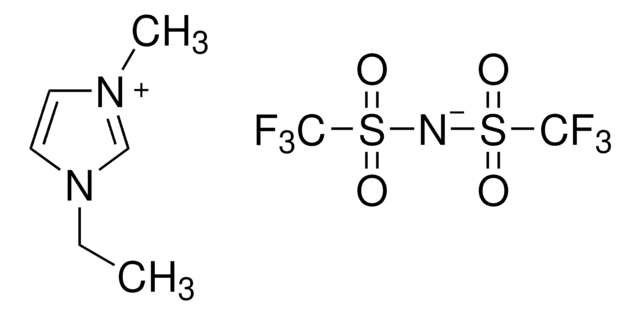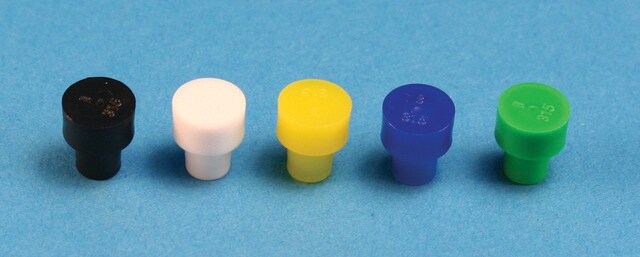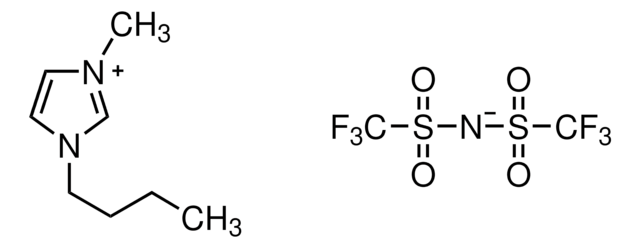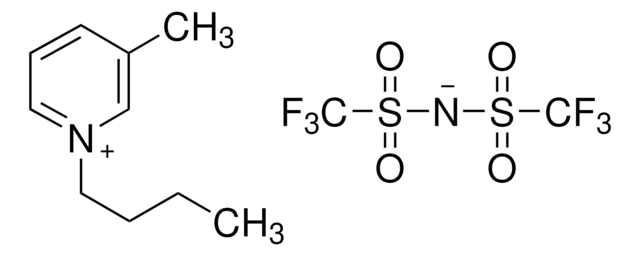900873
1-Butyl-1-methylpyrrolidinium bis(trifluoromethylsulfonyl)imide
>99%, <500 ppm H2O
Sinonimo/i:
N,N-Butylmethylpyrrolidinium bis(trifluoromethanesulfonyl)amide, N,N-Butylmethylpyrrolidinium bis(trifluoromethanesulfonyl)imide, N,N-Butylmethylpyrrolidinium trifluoromethanesulfonimide, PYR14-TFSI
About This Item
Prodotti consigliati
Livello qualitativo
Saggio
>99%
Forma fisica
liquid
Impurezze
<500 ppm H2O
Punto di fusione
-18 °C
Densità
1.378 g/cm3
applicazioni
battery manufacturing
Stringa SMILE
CCCC[N+]1(C)CCCC1.FC(F)(F)S(=O)(=O)[N-]S(=O)(=O)C(F)(F)F
InChI
1S/C9H20N.C2F6NO4S2/c1-3-4-7-10(2)8-5-6-9-10;3-1(4,5)14(10,11)9-15(12,13)2(6,7)8/h3-9H2,1-2H3;/q+1;-1
HSLXOARVFIWOQF-UHFFFAOYSA-N
Cerchi prodotti simili? Visita Guida al confronto tra prodotti
Descrizione generale
Applicazioni
Prodotti correlati
Codice della classe di stoccaggio
10 - Combustible liquids
Classe di pericolosità dell'acqua (WGK)
WGK 3
Punto d’infiammabilità (°F)
>230.0 °F - Not applicable
Punto d’infiammabilità (°C)
> 110 °C - Not applicable
Certificati d'analisi (COA)
Cerca il Certificati d'analisi (COA) digitando il numero di lotto/batch corrispondente. I numeri di lotto o di batch sono stampati sull'etichetta dei prodotti dopo la parola ‘Lotto’ o ‘Batch’.
Possiedi già questo prodotto?
I documenti relativi ai prodotti acquistati recentemente sono disponibili nell’Archivio dei documenti.
I clienti hanno visto anche
Articoli
Dr. Sun reviews the recent advances in solid-state rechargeable batteries and cover the fundamentals of solid electrolytes in solid-state batteries, the theory of ion conduction, and the structures and electrochemical processes of solid-state Li batteries.
Here, we present a short review of ionic liquid electrolytes used in state-of-the-art rechargeable batteries including high performance and low-cost aluminum batteries, non-flammable Li-based batteries, and high-cycling and stable dual-graphite batteries. We also outline the key issues explored so as to identify the future direction of IL development.
Il team dei nostri ricercatori vanta grande esperienza in tutte le aree della ricerca quali Life Science, scienza dei materiali, sintesi chimica, cromatografia, discipline analitiche, ecc..
Contatta l'Assistenza Tecnica.






